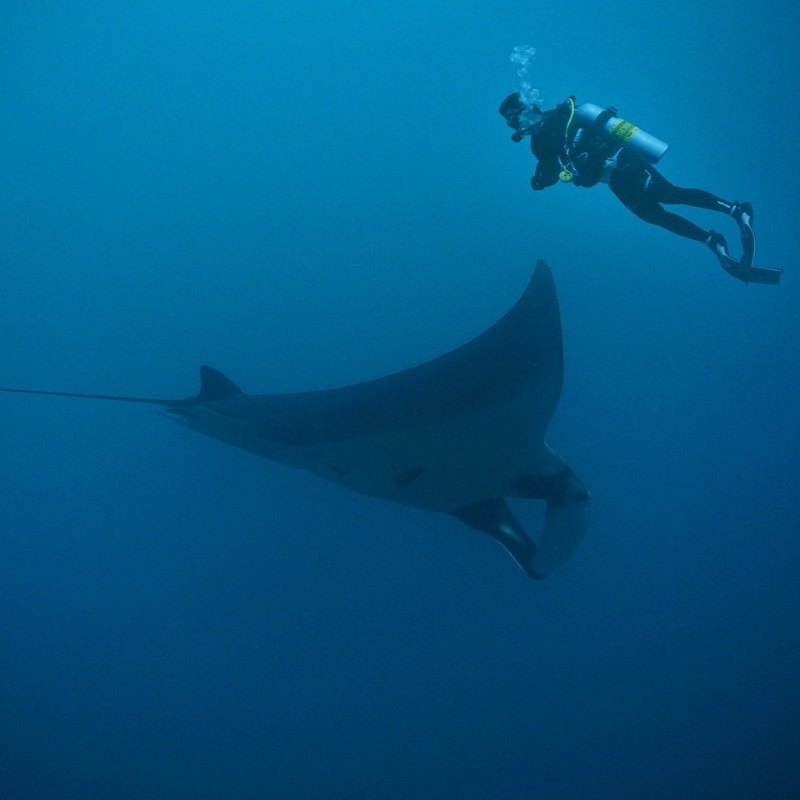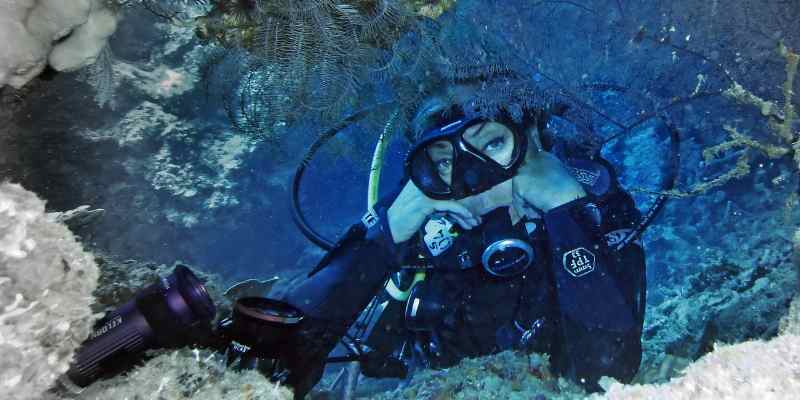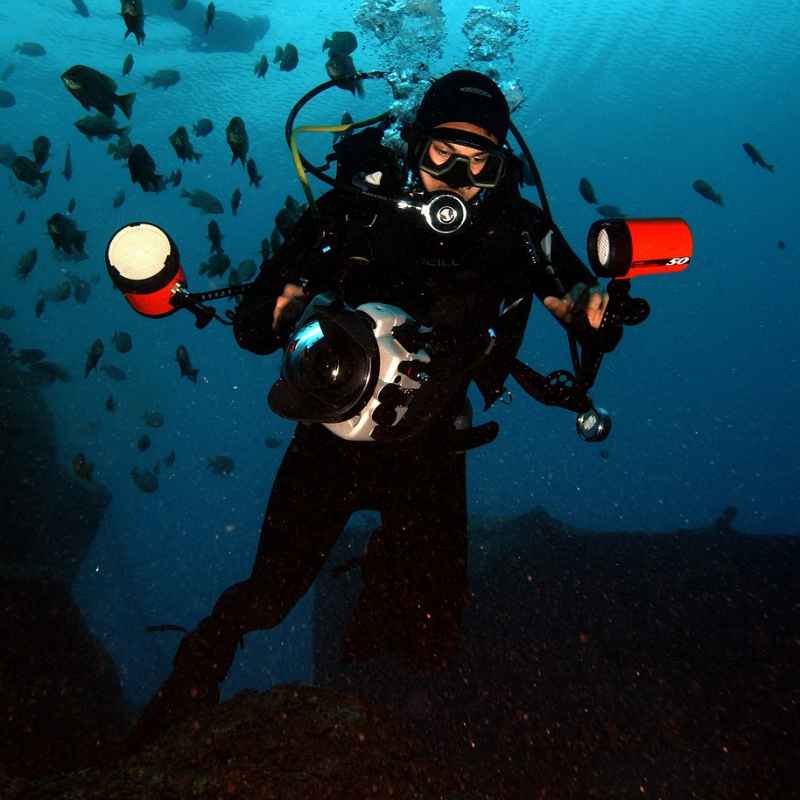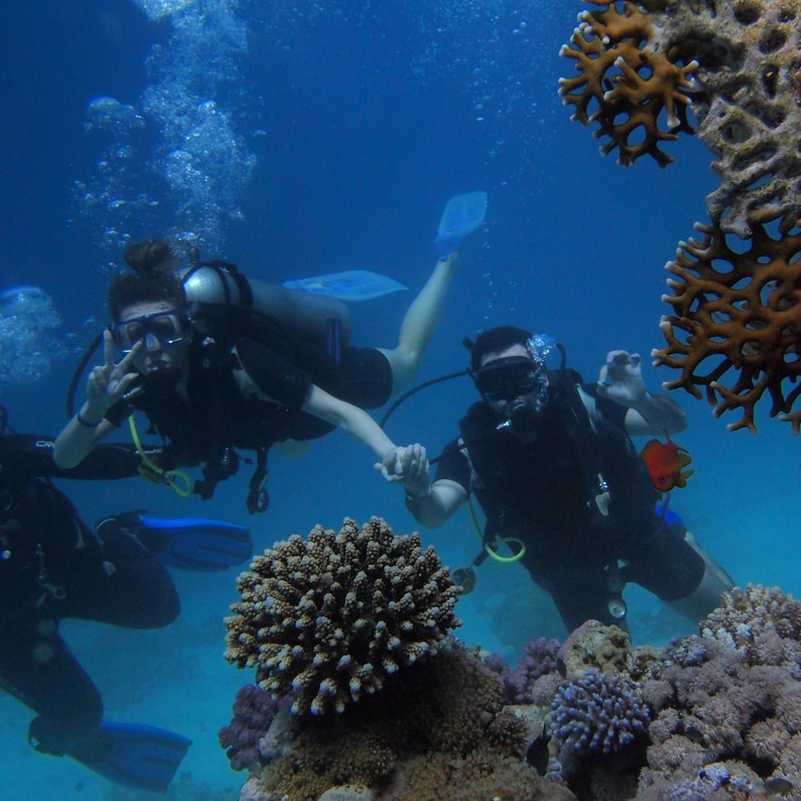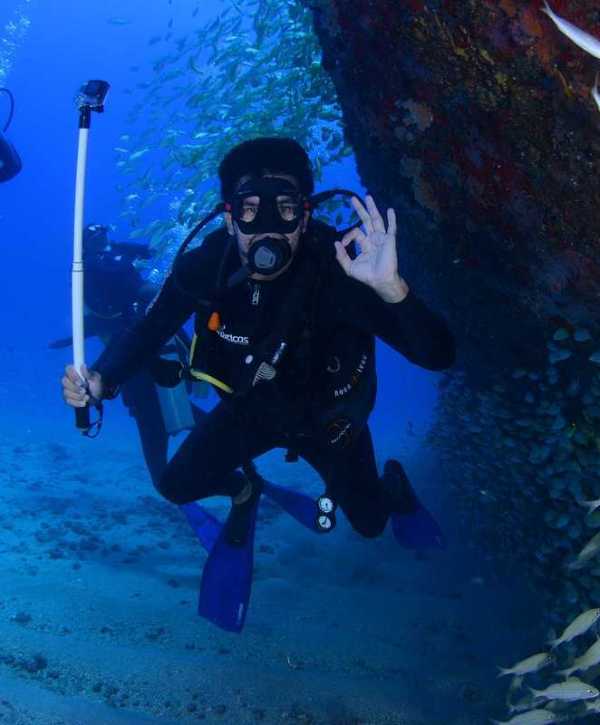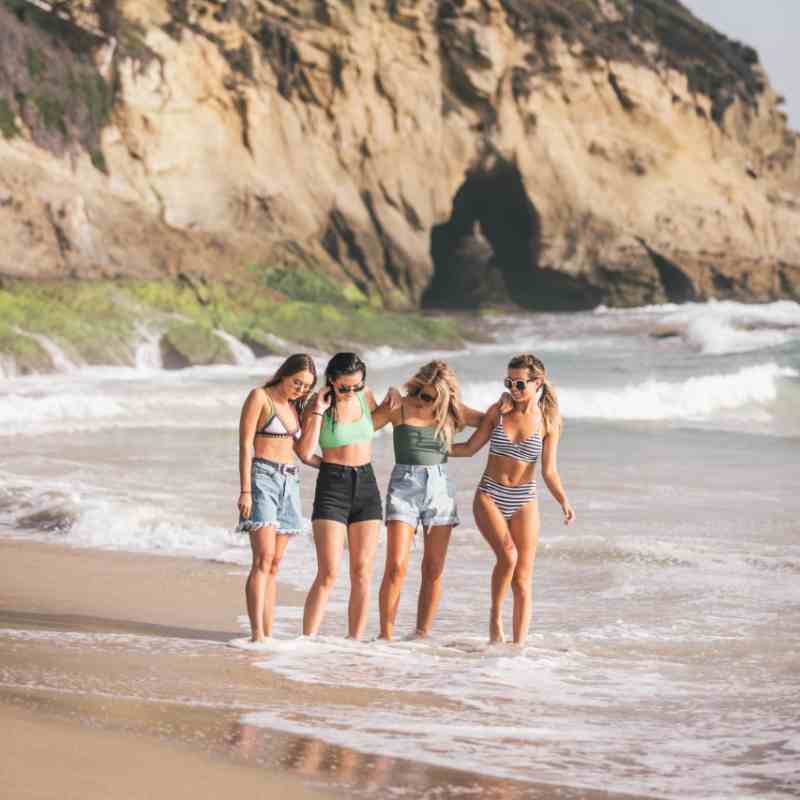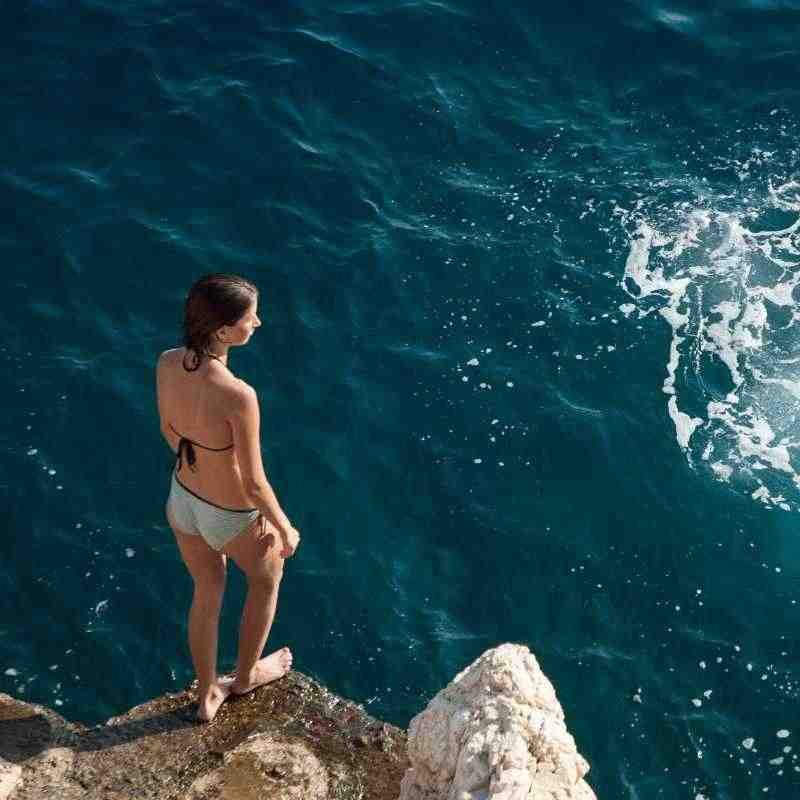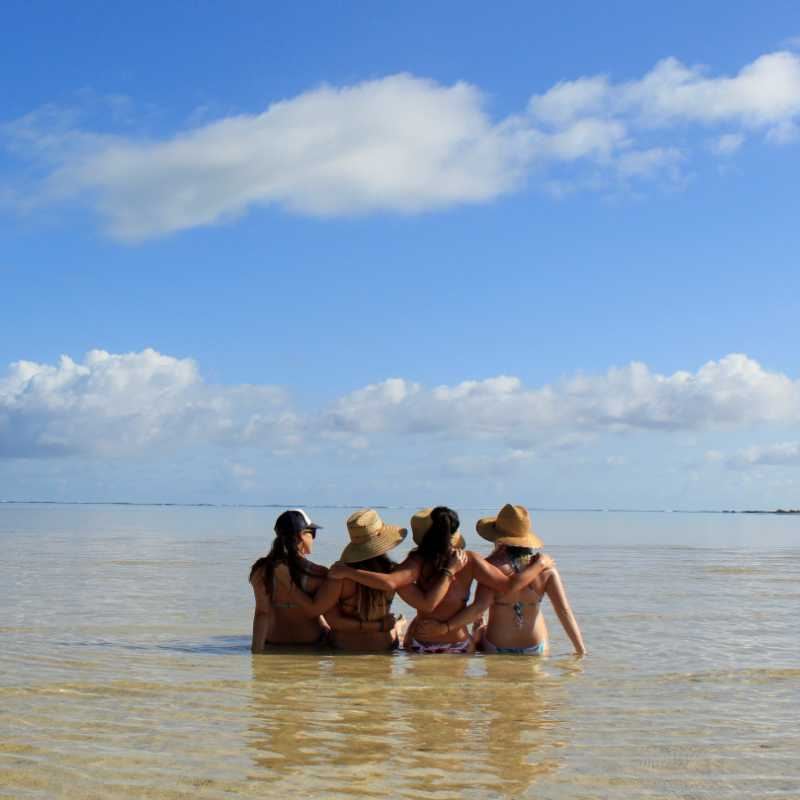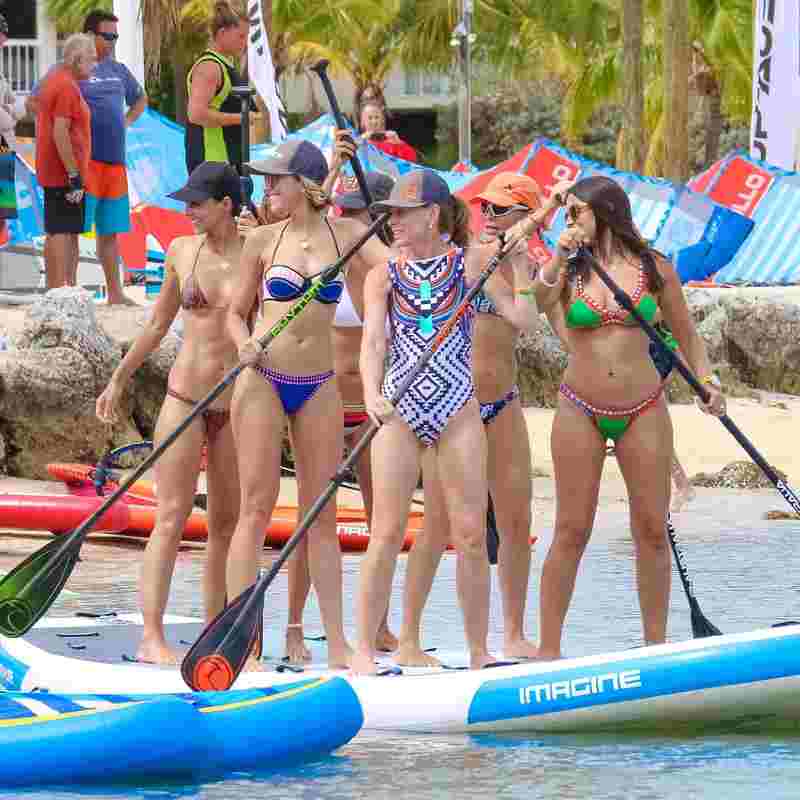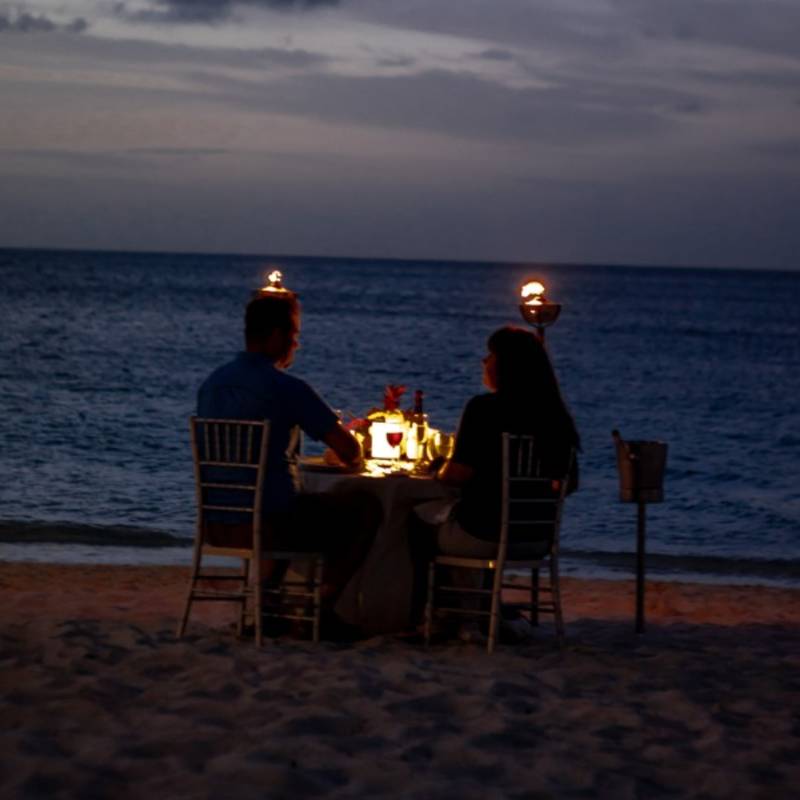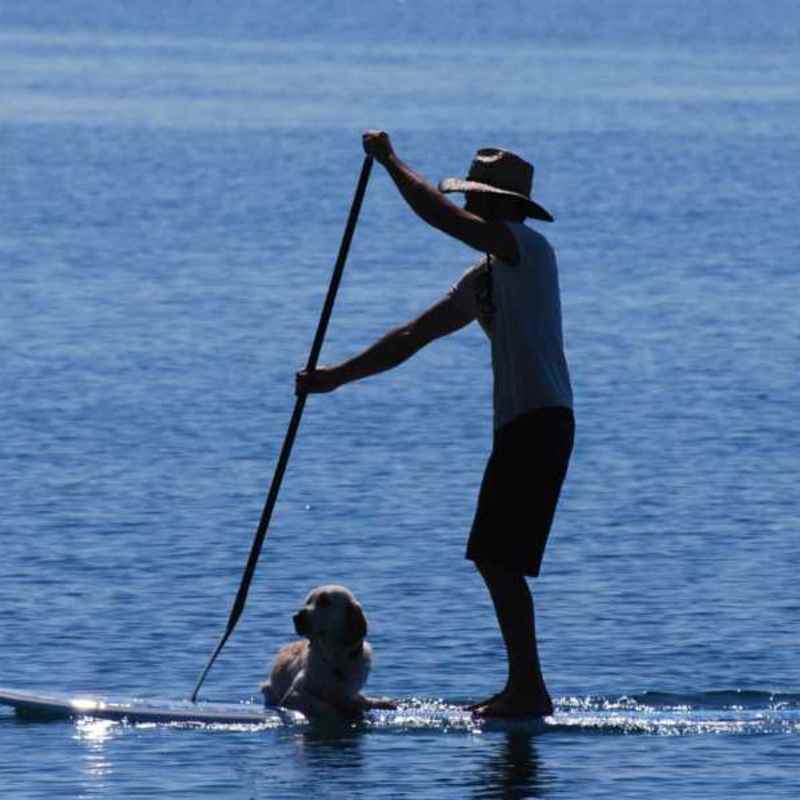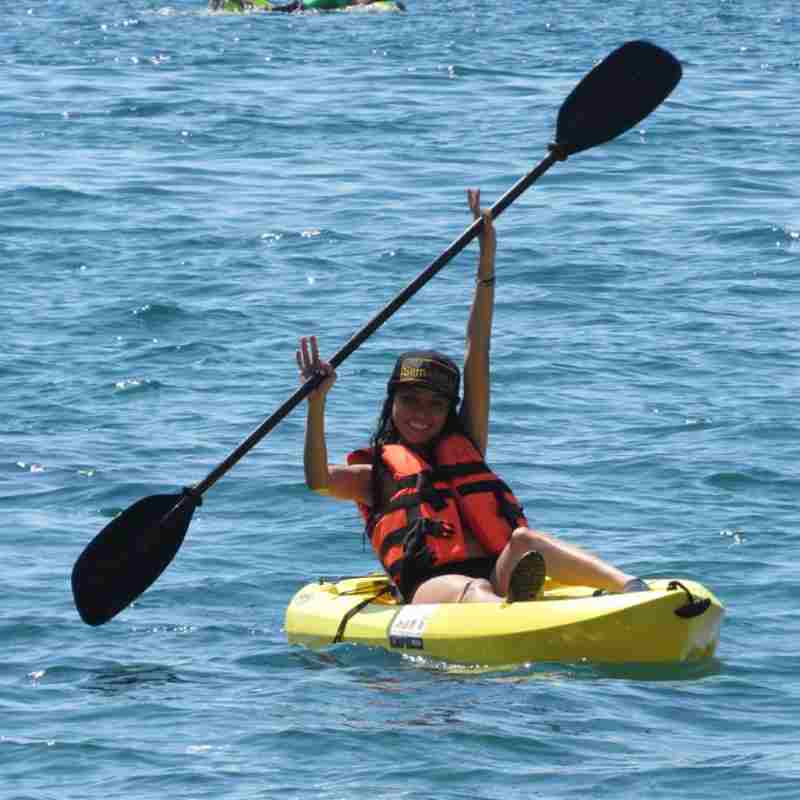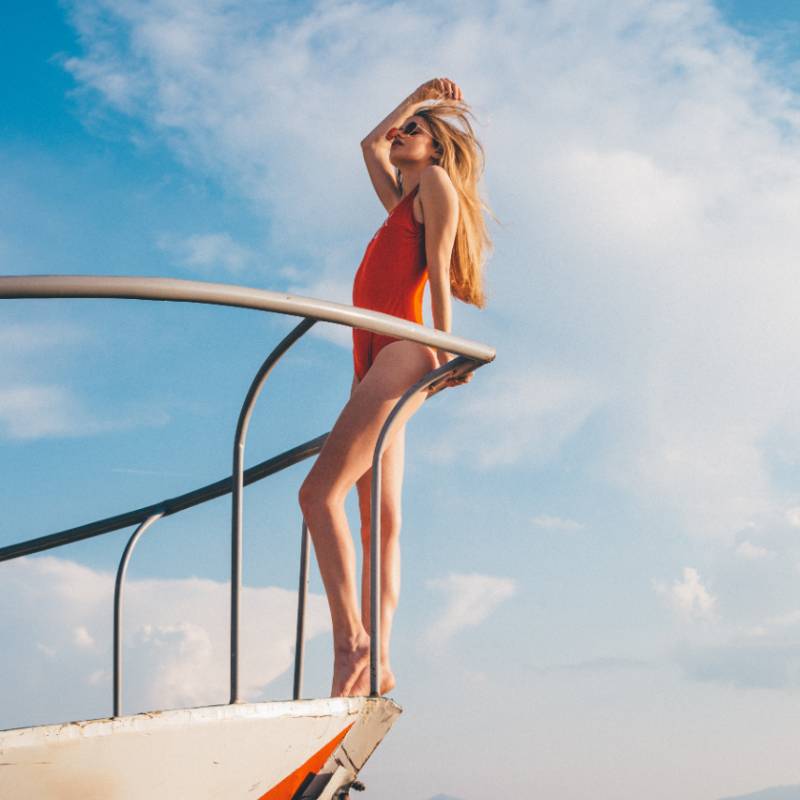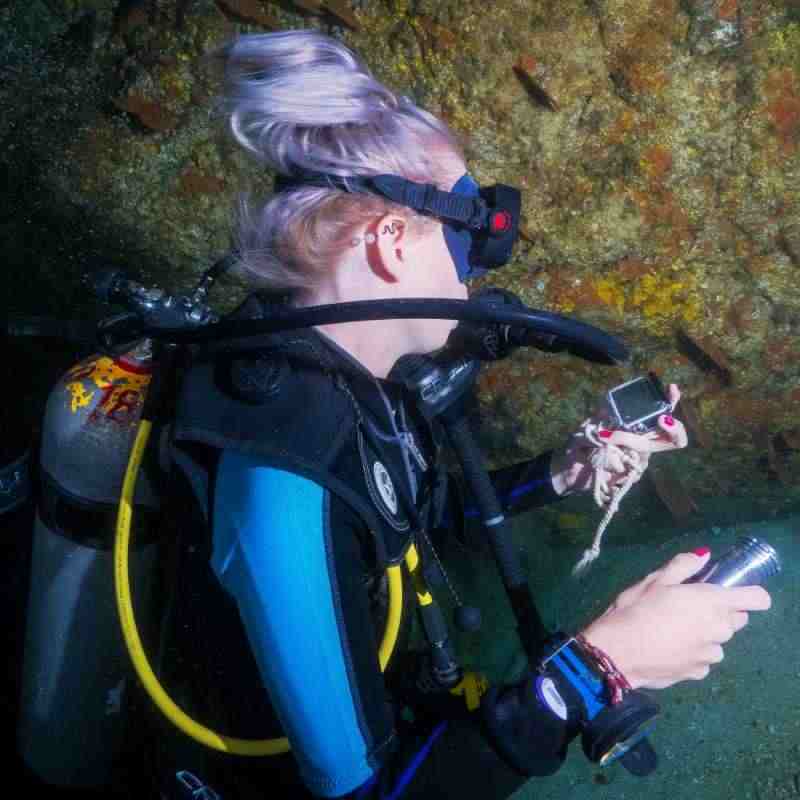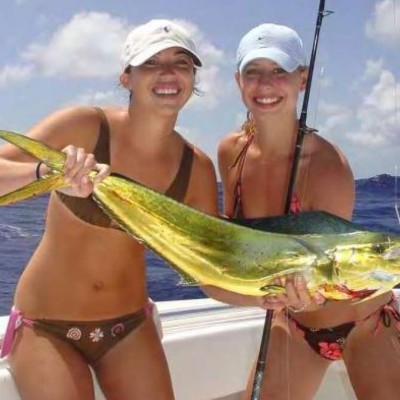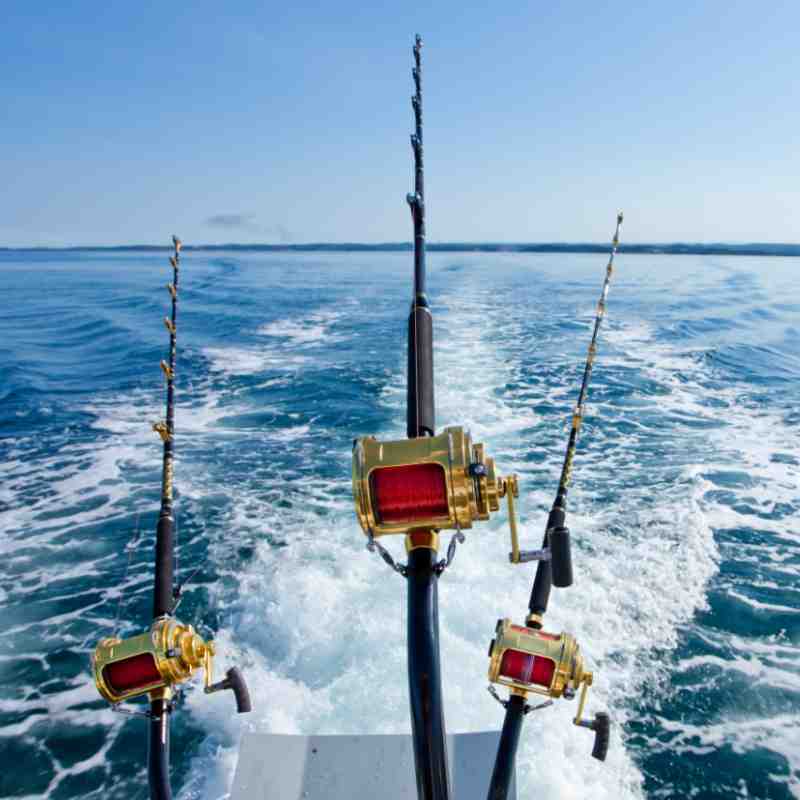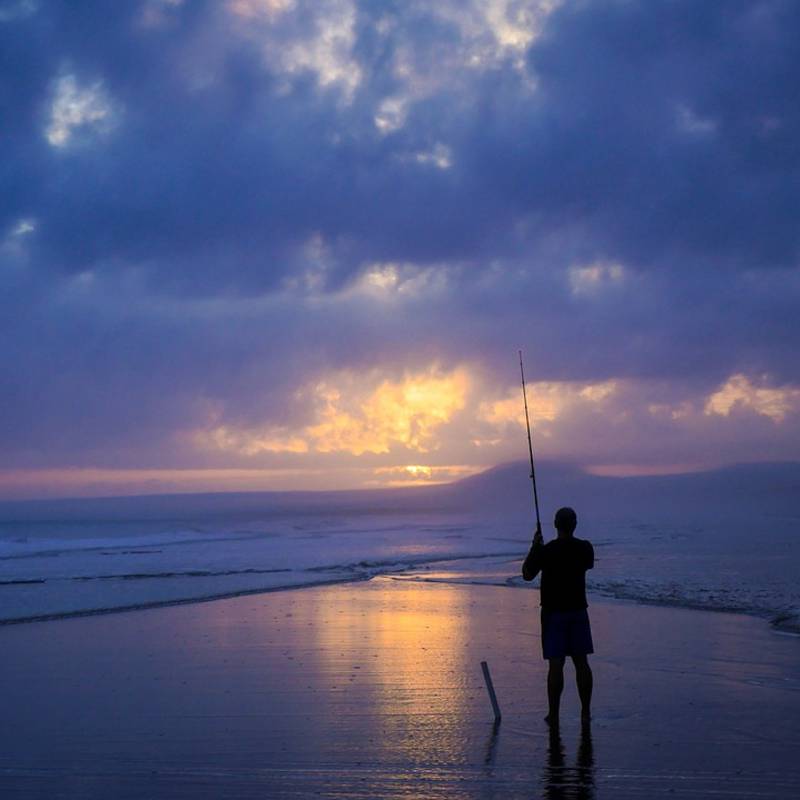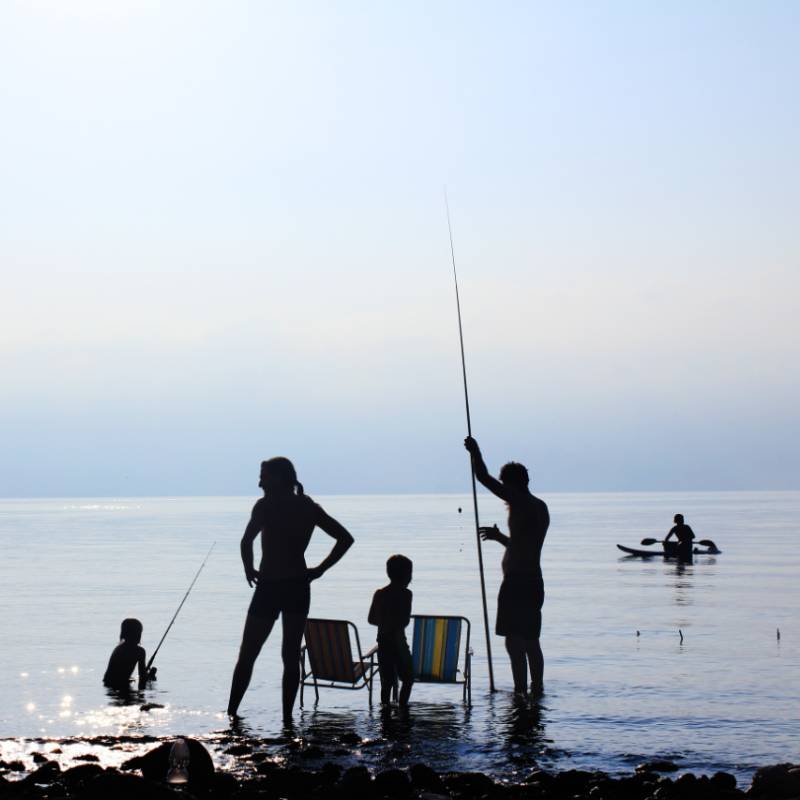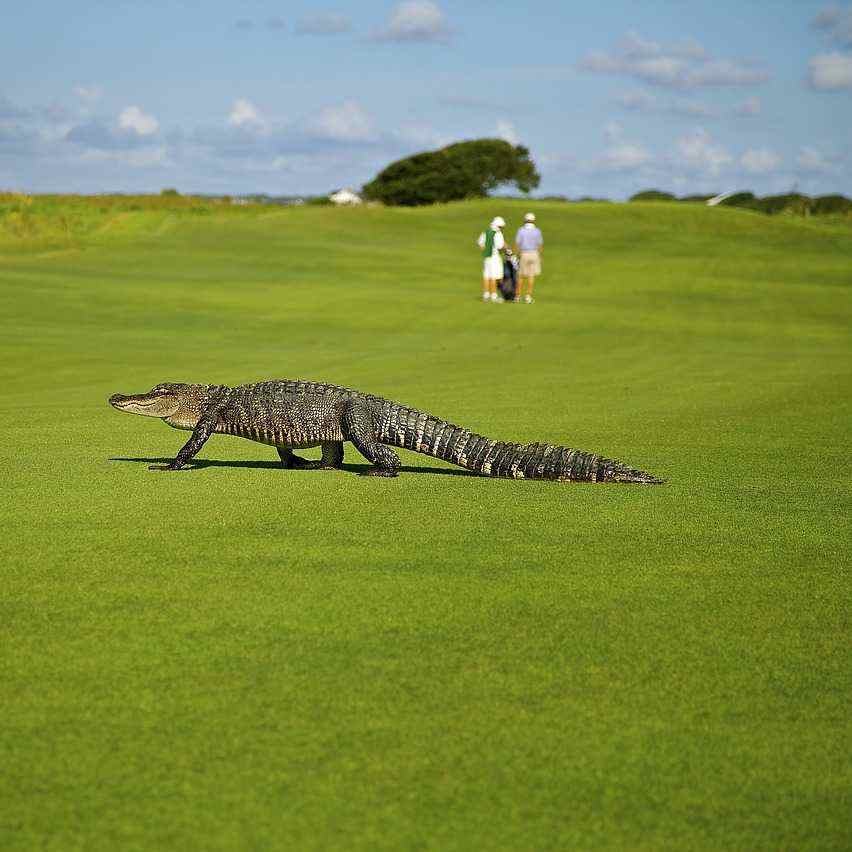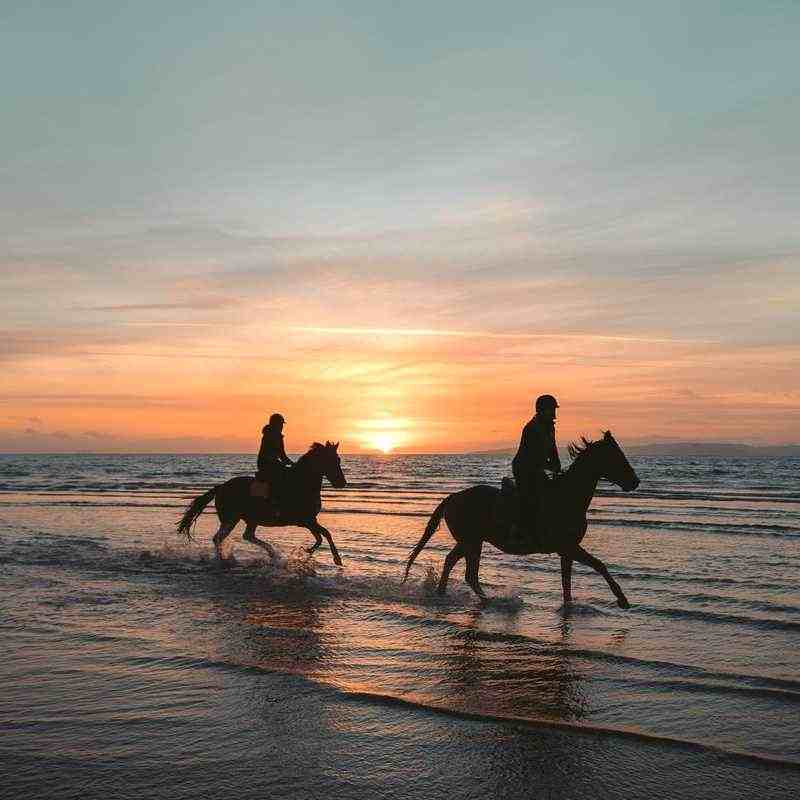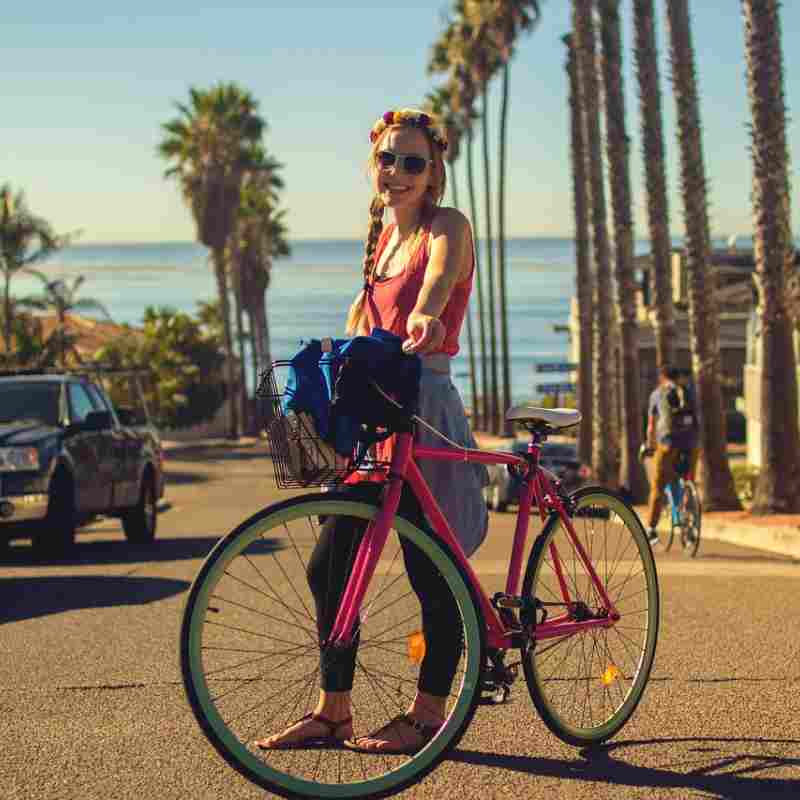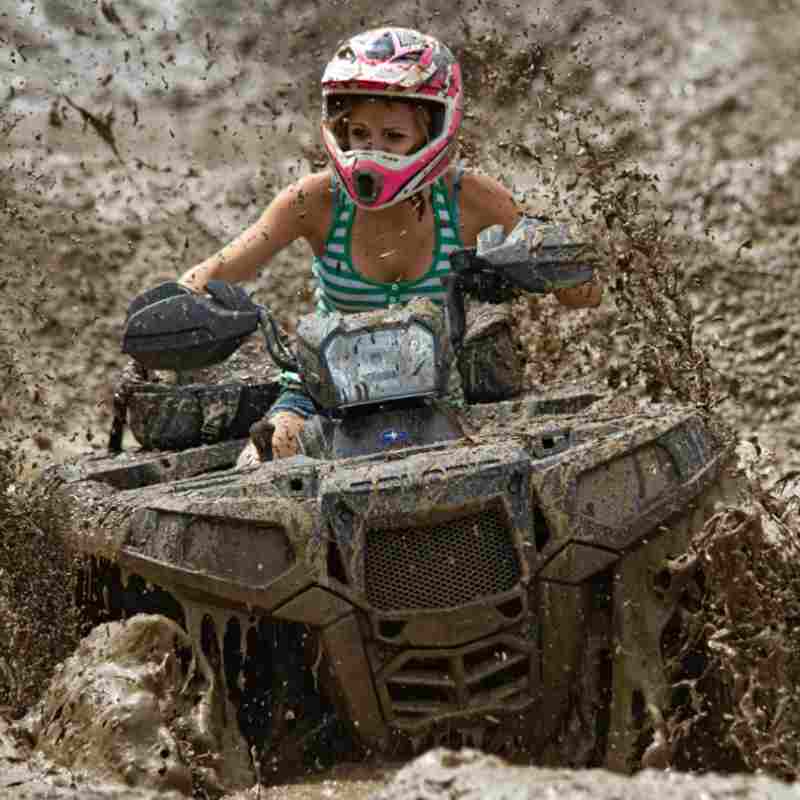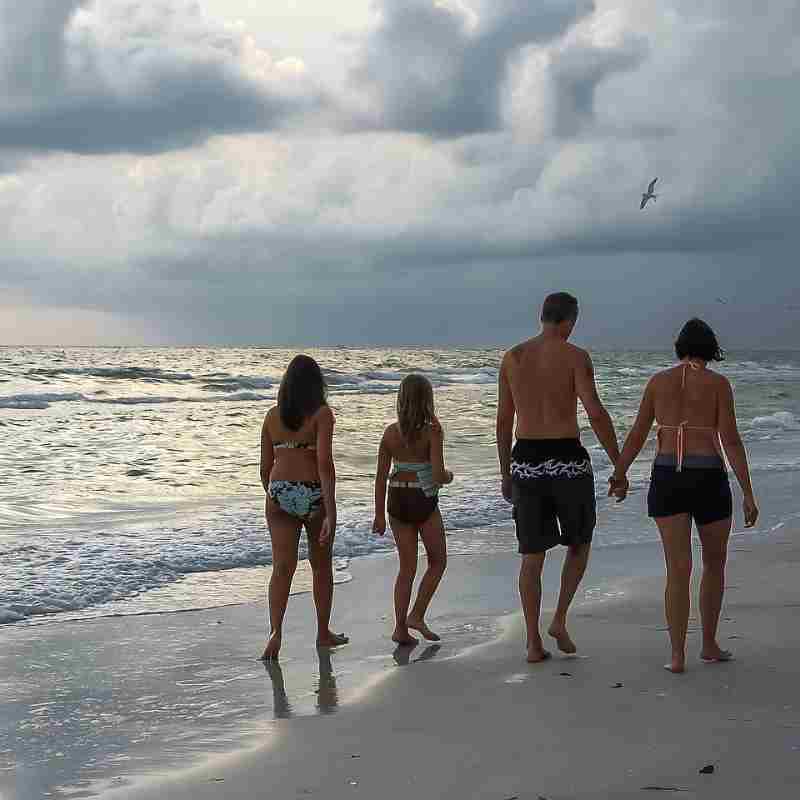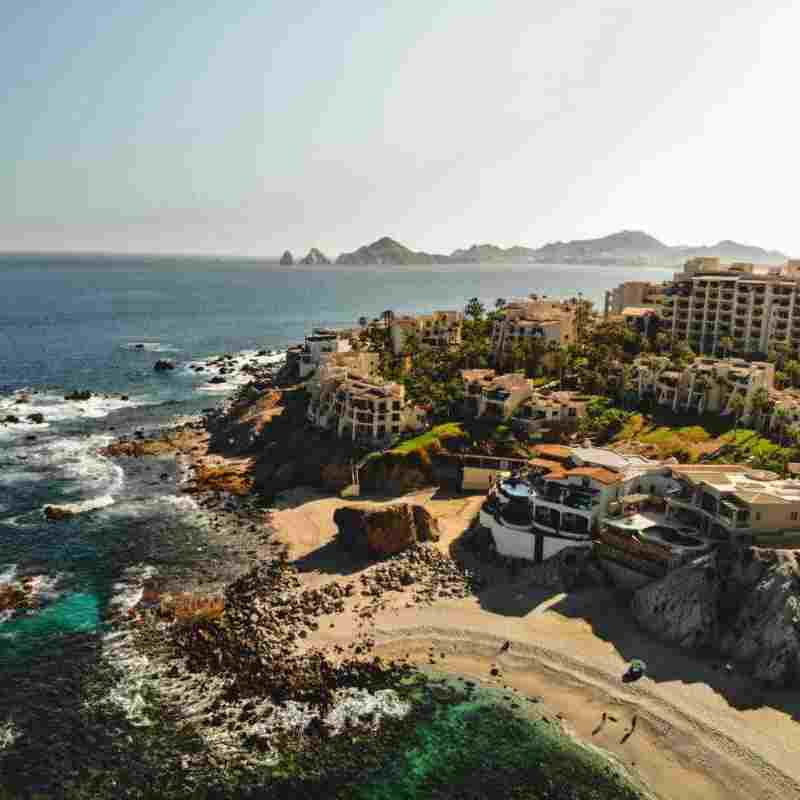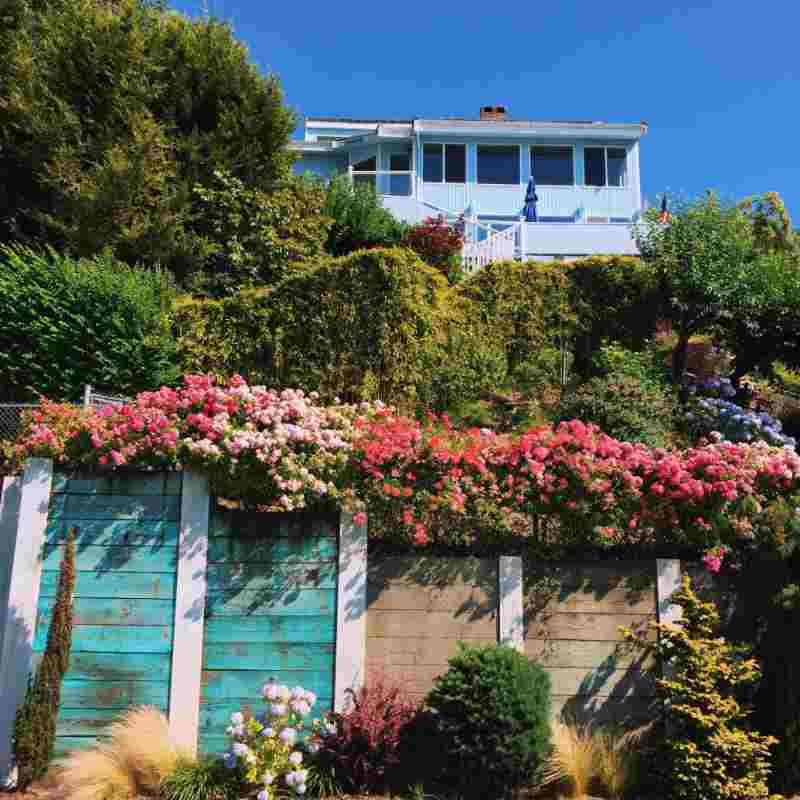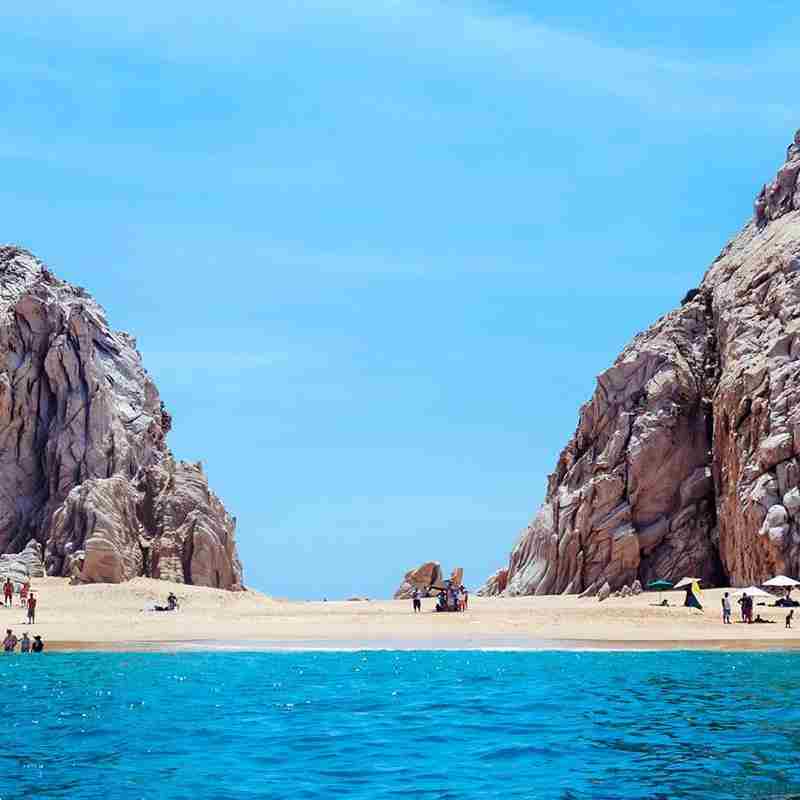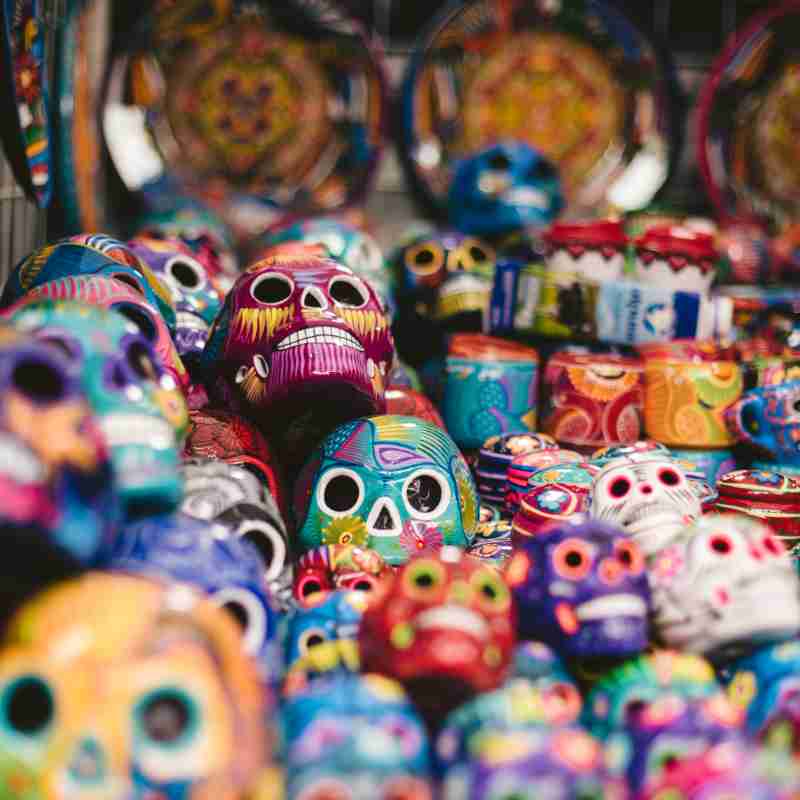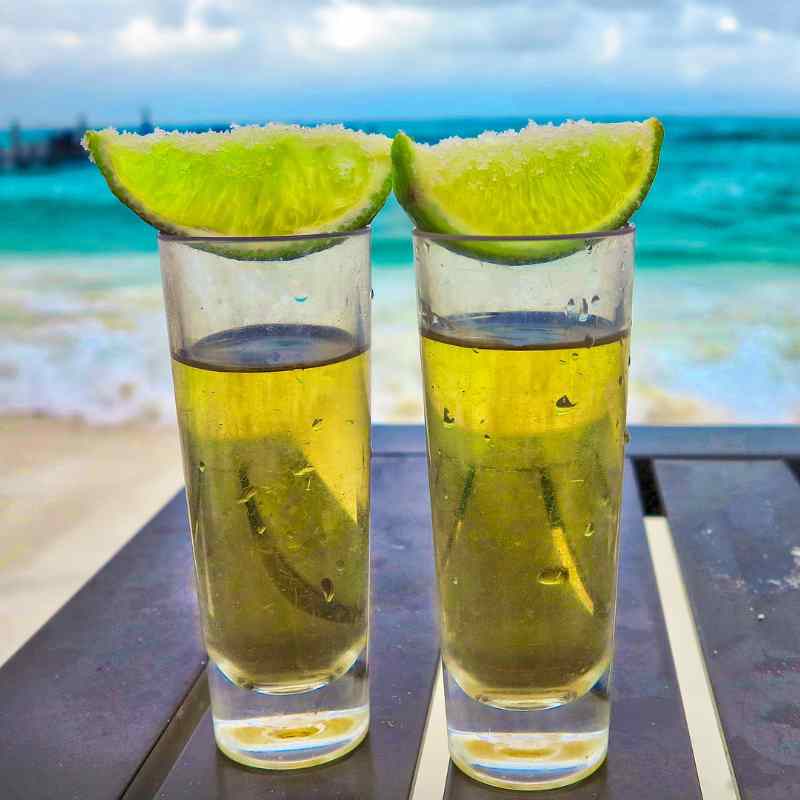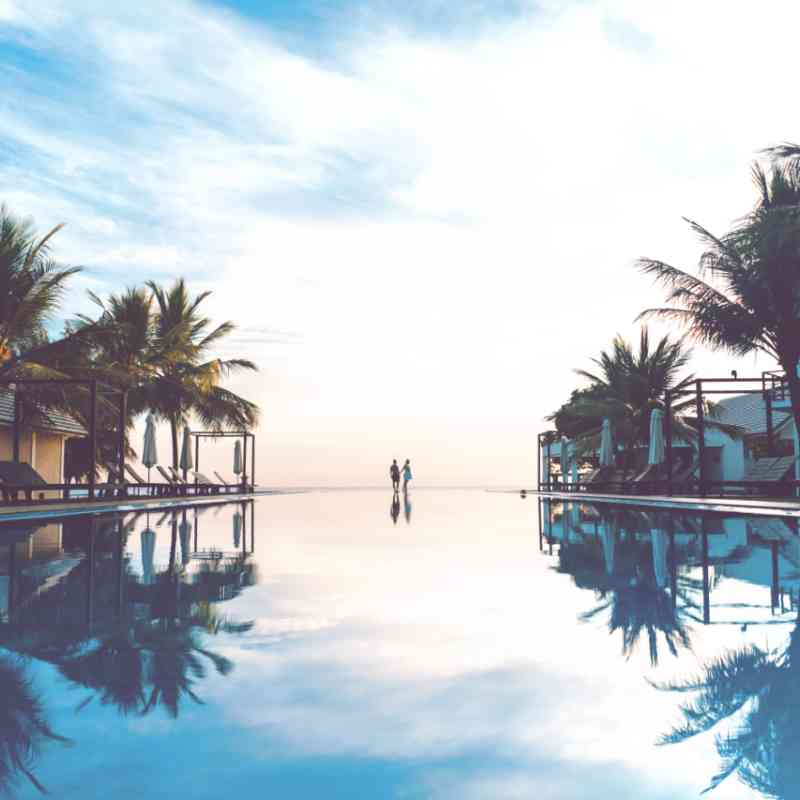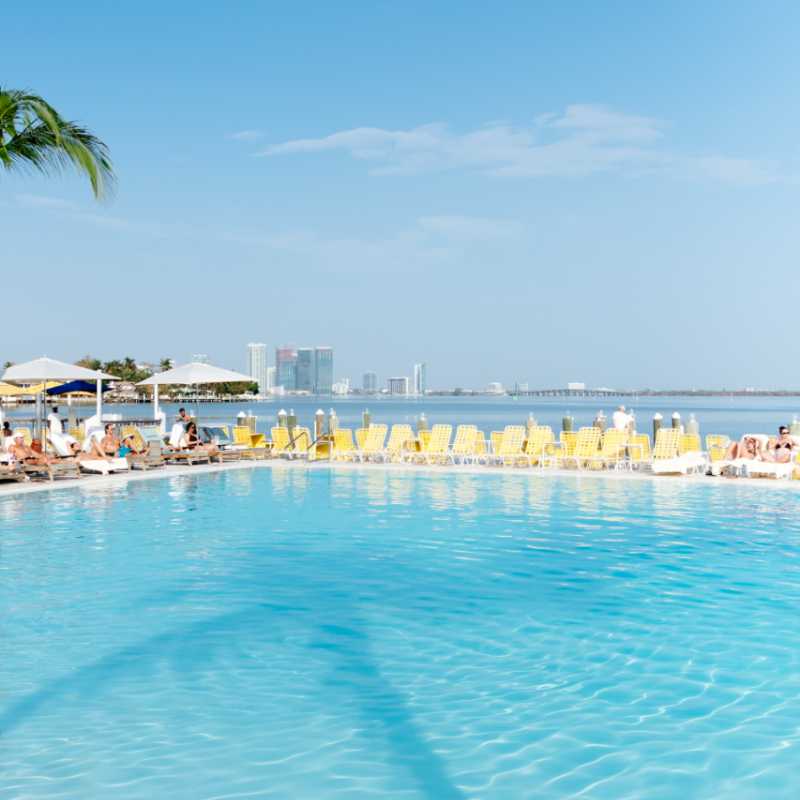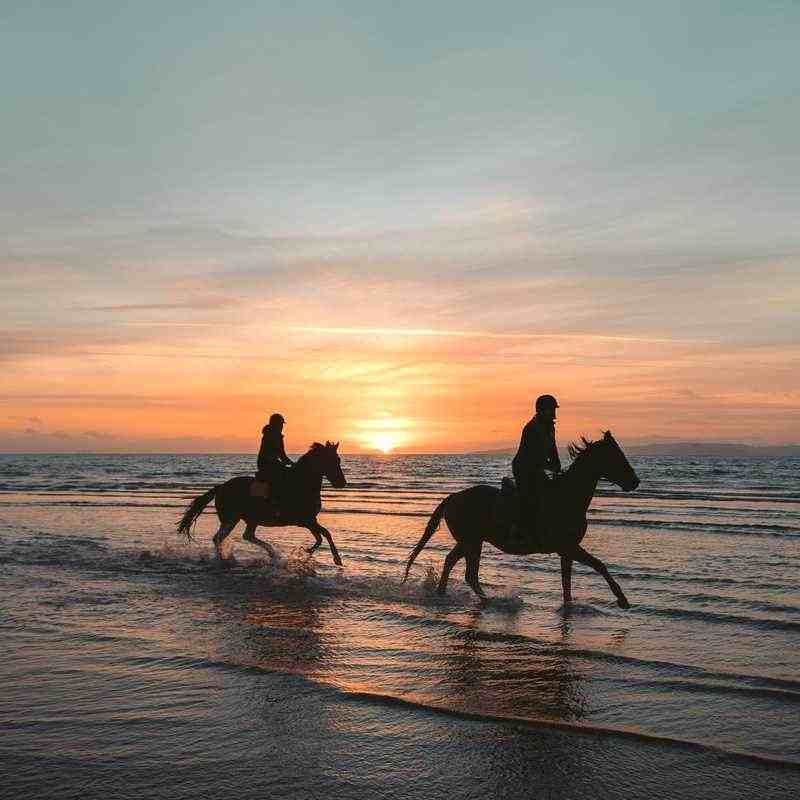Sí Cabo San Lucas Diving
Surrounded on three sides by water, the Baja Peninsula offers astounding dives filled with pelagic species. The Sea of Cortez is the main focal point of Baja California.

Cabo San Lucas
Destination & Adventures
Explore the Undersea World of
Cabo San Lucas
Famous first as a resort destination and second as a scuba destination, diving in Cabo San Lucas is easy enough for a true beginner yet offers challenges for even the most expert diver. Beginners will enjoy the protected rocky reefs of San Lucas Bay. Intermediate and advanced divers can head outwards toward the dramatic walls just offshore. These drop to unimaginable depths. Finally, current-heavy submerged pinnacles and deep wrecks located at the join between the Sea of Cortez and the Pacific Ocean are reserved for the most advanced divers.
Most diving in Cabo San Lucas takes place with the aid of small speed boats. However, this tourist destination is a great shore diving location as well. Most of the bay can be accessed from land.
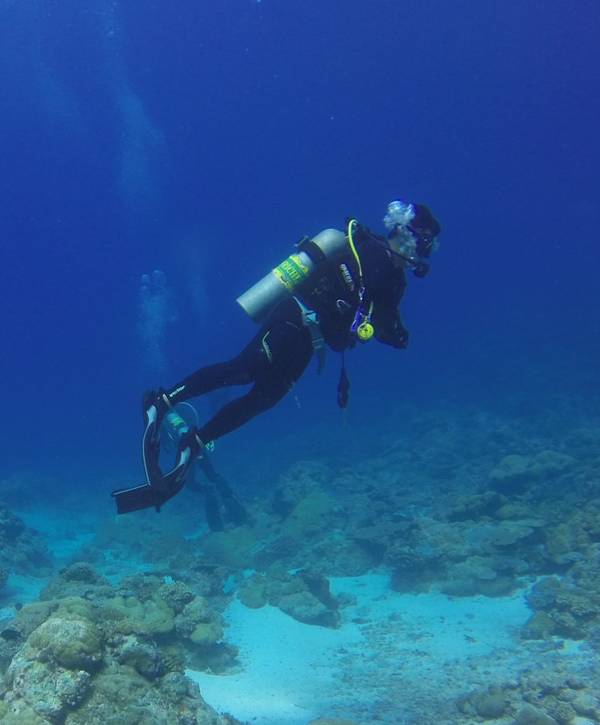
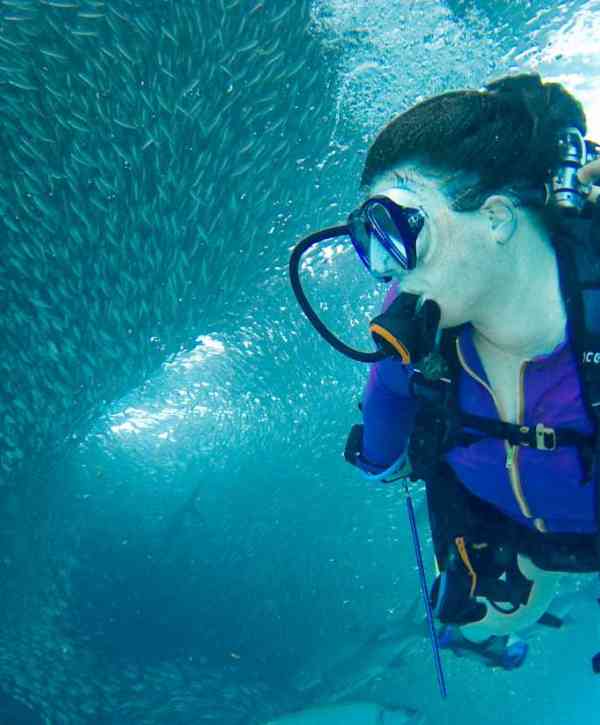
Experience the Undersea World
On the southern end of the Central Pacific Coast, Cabo San Lucas is a traditional holiday destination with a growing scuba industry. Manta rays can be seen throughout the year, but during the winter months, divers also have the chance of spotting a whale shark or one of the thousands of humpbacks that breed and calve in the area. warm waters and rocky reefs are home to a variety of tropical fish. Small coral formations, sea fans, barnacles and gorgonians dot the underwater landscape.
Aside from the fascinating rocky reefs that are protected from heavy currents in the Sea of Cortez and off the coast of Los Cabos, most of the underwater landscapes consist of rocky islands mixed with underwater pinnacles. Some of the less protected islands, such as Revillagigedo Islands and Gordo Banks, are surrounded by raging currents that relegate these sites to advanced divers. Beginners should stick to the protected reefs on the east side of the peninsula.
Cabo San Lucas Dive Sites
Cabo San Lucas Dive Sites
The bay of Cabo San Lucas encompasses several unique dive sites. The Cabo San Lucas dive sites were protected in 1973 by the President of Mexico and declared the second underwater national marine park after Cozumel. Inside the park it is forbidden to fish, spearfish or collect anything in order to maintain a healthy marine environment. All of the Cabo San Lucas dive sites are within a quick 10 minute boat ride from the marina and the conditions inside the bay are usually calm with no or little currents and a calm surface.
Pelican Rock
The reef starts at 10 ft. on a sandy bottom and gradually slopes to 70 feet before it drops off a deep wall down to 500 feet. One of the famous “Sandfalls” is located at the top of the submarine canyon in about 90 feet of water. This calm protected site teeming with a wide variety of tropical fish and invertebrates and as a result it is some diving in Los Cabos. You may see large schools of snappers, sea bass, scorpion fish, porcupine and puffer fish. Moray eels and devil rays along with electric and cortez rays and many more call this site home. This dive site is perfect for divers of all levels, night dives and snorkelers alike.
Land’s End
Where the Sea of Cortez meets the Pacific Ocean, creating great reef, pinnacle and wall dives. SAND FALLS OF LAND’S END
One of Cabo San Lucas’ premiere dive sites, Land’s End features unique sand falls off the cliffs where the Sea of Cortez meets the Pacific Ocean. This dive site is unique because you dive in both the “Sea of Cortez” and the “Pacific Ocean” at the same time. Large schools of barracudas, tunas and baitfish make this an unforgettable dive. The flat rock inside the cove is home to a small colony of California sea lions which dive and play with the divers. The “Nürnberg” shipwreck sits at around 40 feet and was nearly completely covered for many years. Hurricane “Odile” uncovered most of it in 2014 and as a result the shipwreck can be explored by beginners and advanced divers alike. Large schools of cow-nose rays and devil rays (small mantas) can be seen during the summer months.
Neptune’s Finger
This dive sites consists of two coral reefs. A beautiful vertical wall and the biggest sandfall of the Cabo San Lucas Marine park. The top of the reef is only 15 feet deep and the vertical wall drops down to more than 500 feet. Turtles, groupers, machetes, goatfish and a lot of other tropical fish have made this reef their home. Neptune’s Finger is also a good place to see big fish like manta rays, schooling devil rays, yellowtails and amber jacks. Even Mola Molas (sunfish) have been seen here.
Middle Wall
The middle wall is a vertical drop-off from 75 – 500+ feet. The average depth for this dive is 100 feet. Diving next to the wall without seeing the bottom gives you a sensational feeling of freedom. The rocky cliff face continues to the west until it connects with the sandfalls at Pelican Rock. Enormous groupers and large schools of pigmy mantas as well as sharks and even whale sharks can be seen here.
North Wall
The North Wall is a great dive for beginners as well as for more experienced divers. The rock-covered slope goes from 15 to 70 feet and makes a great home for moray eels, puffer and porcupine fish. Flute fish, scorpionfish, spiny and slipper lobsters also call this place home. During the summer months even seahorses can be seen.
Dive Sites
CABO PULMO
With multiple dive sites Ccount on seeing schools of fishes, huge green moray eels, boxfish, octopus, ballonfish and sometimes when it’s season, humpackwhales and whalesharks. Located northeast of Cabo San Lucas on the Sea of Cortez, Cabo Pulmo National Park is home to one of only three coral reefs in western North America.
Cabo Pulmo National Park has been deemed the most successful marine park in the western hemisphere. Established in 1995 to protect one of only three coral reefs on the west coast of North America, this national park is currently home to 6,000 marine species. Continual coral growth projects ensure a steady rise in fish levels.
Both beginners and advanced divers are welcome. Beginners remain closer to shore while advanced divers will spend more time in the open ocean where drift dives are more prevalent.
El Cantil is a large reef with sheer walls that drop beyond sight. Here marco-lovers will rejoice in the nooks and crannies where all manner of nudibranchs, shrimps and crabs await. This area requires more than one dive to explore fully.
El Bajo is an amazing reef at advanced depths. In addition to fish of all shapes and sizes, this is where divers occasionally report Whale Sharks, Mobulas and Humpback Whales.
GORDO BANKS
The most specialized dive site is “Gordo Banks”. Our dive shop is also very successful in finding schooling hammerhead sharks. Sharks at Gordo Banks on a good day can be in their hundreds. Dive features a seamount with a submerged plateau where you’ll find scalloped hammerheads, groupers, mackerels and a variety of rays.
Gordo Banks is located 8-10 miles off-shore from San Jose del Cabo. There are different seamounts, while the top of one is approximately 120 feet, the other is at 180 feet.
This is a unique location where the hammerhead sharks gather in large numbers, but please be aware that the sightings are not guaranteed. Schools of jacks, mackerels, tunas, snapper, groupers, eagle rays, cow-nose rays and mobula ray are also common visitors at this offshore reef. Silky sharks and whale shark may be seen with a bit of luck in the cooler month from April – June.
Due to the advanced conditions at Gordo Banks there is no time to adjust weights, gear etc. at the surface, this needs to be done prior to this dive. Please also note that this a hit or miss dive. The dive conditions at Gordo Banks can be quite challenging, due to the depth, strong currents, visibility and heavy seas. Therefore we require all divers (with less than 100 logged dives) to do a local 2 tank dive in the Cabo San Lucas marine park or at the Corridor prior to diving at Gordo Banks.
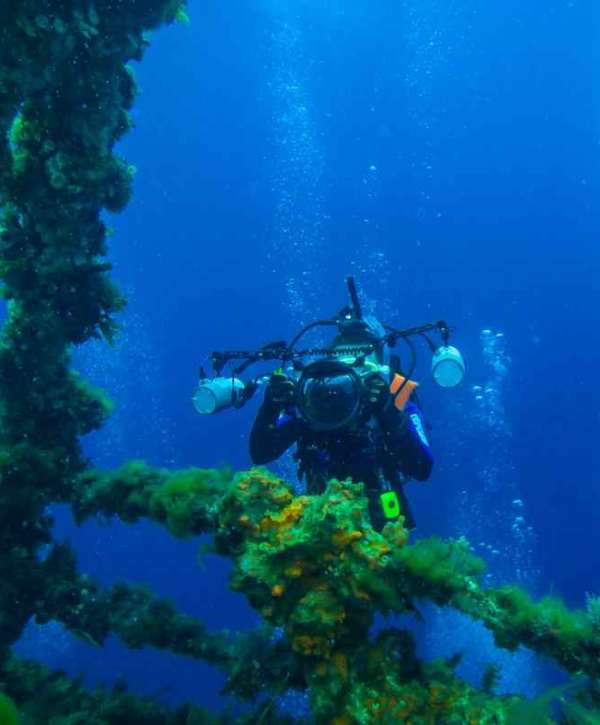
Dive Highlights
- Land’s End
- Playa del Amor
- Playa Chileno
- Playa Medando
- Playa Hotelera
- Playa del Divorico
- Playa Solmar
- Santa Maria Beach
- Cabo San Lucas
- Cabo Pulmo
- Gordo Banks
- Corridor
Dive Highlights
- Land’s End
- Playa del Amor
- Playa Chileno
- Playa Medando
- Playa Hotelera
- Playa del Divorico
- Playa Solmar
- Santa Maria Beach
- Cabo San Lucas
- Cabo Pulmo
- Gordo Banks
- Corridor
Corridor Dive Sites
Corridor Dive Sites
Along the 18 mile tourist corridor between Cabo San Lucas and San Jose Del Cabo there are 5 great dive sites. The topography of this sites are very different from the ones at the Cabo San Lucas Marine Park. The boat ride to the sites takes anywhere between 10 and 30 minutes from the Cabo San Lucas Marina. Schools of dolphins and jumping pigmy manta rays are often seen on the way to the dive sites. The Corridor dive sites are also less crowded than the ones in Cabo San Lucas so many people choose to dive here.
Whales Head
This shallow dive site starts in only 5 feet and ends in a sandy bottom at 50 feet. The coral growth is superb and is complemented with large numbers of tropical fish. This spot is also known to be home of a school of spotted eagle rays which are very relaxed and quite often get up close and surround the divers. In addition a wide range of marine life can also be found here including sea turtles, octopus and moray eels. It is sometimes possible to find large schools of pork fish and snappers on the sandy bottom next to the reef. Furthermore you can often enjoy the sound humpback whales singing underwater.
Gavilanes
Between “Santa Maria” and “Chileno” there is a small bay with a beautiful reef in the center. The top of this reef is in only 5-30 feet and covered in coral. This is probably the best coral reef in Los Cabos. Most noteworthy are the lobsters, angelfish, groupers, several types of rays, white tip reef sharks and much more. This dive is suitable for beginners and more advanced divers and one of our favorite Corridor dive sites.
Chileno Bay
This is a lively, protected reef that starts at 100 yards off the shore of “Chileno” beach and extends out into the bay for about a half of a mile or so. The reef ranges between 5 and 60 ft and is covered with sea fans. Sometimes we get to see mantas, large sea bass, sea turtles and nurse sharks. Invertebrates like Starfish, Flower Urchins and Hydroids are also common. It is also a very appealing site to the beginning diver or snorkeler. Here you will experience very shallow and calm waters making it accessible for a types of divers of snorkelers.
Santa Maria
SCHOOLING RAYS OF SANTA MARIA
To the east of Cabo San Lucas, Santa Maria is a shallow bay with healthy corals. Schooling rays pass through and you might spot a Banded Guitarfish. This site starts on the souther side of the protected Santa Maria bay in only 10 feet and gradually drops down to 45 feet. The shallow reef is teeming with marine life like Surgeon and angelfish, porcupinefish, pufferfish, groupers and hogfish. Also Snappers, moorish idols, nudibranches, flatworms and several species of rays have made this site their home. In general there is no current but sometimes divers feel the surge from the waves.
The Blow Hole
This spectacular site which got its name from a small blowhole in the cliffs nearby. Massive boulders and crevices form the reef of this spectacular and also exciting dive. Many types of rays, turtles, schools of jacks, puffer fish and groupers are common inhabitants here. There is also a small wall on the northern side which drops from 50 to 100+ feet. This dive is suitable for beginners and professionals.

Cabo San Lucas
Activities & Adventures
Exploring Your Adventure Destination
Your Cabo San Lucas vacation is sure to consist of plenty of fun and excitement, but how about adding a touch of adventure as well? For those who can’t shake that adrenaline bug, consider booking an exciting couples’ excursion, such as zip-lining through the jungle or setting sail on an intimate catamaran cruise, to make the most out of your adventure destination.
Sun and Sand
Beach, Swimming & Sunbathing
Romance
Weddings, Honeymoons & More
On the Sea
SUP, Sea Kayak & Sailing
In the Sea
Snorkel & Scuba Diving
Fishing the Sea
Deep Sea, Shore & Lake
Golf by the Sea
Golfing Experiences
On Land
Horses, Hiking, Biking, ATV
Lifestyle
Live the Lifestyle
Real Estate
Finding the Right investment
Culture
Experience the Culture
Cuisine
Enjoy the Food & Drink
Where to Stay
Find the Right Resort
Special Trips, Tours & Events: Cabo San Lucas
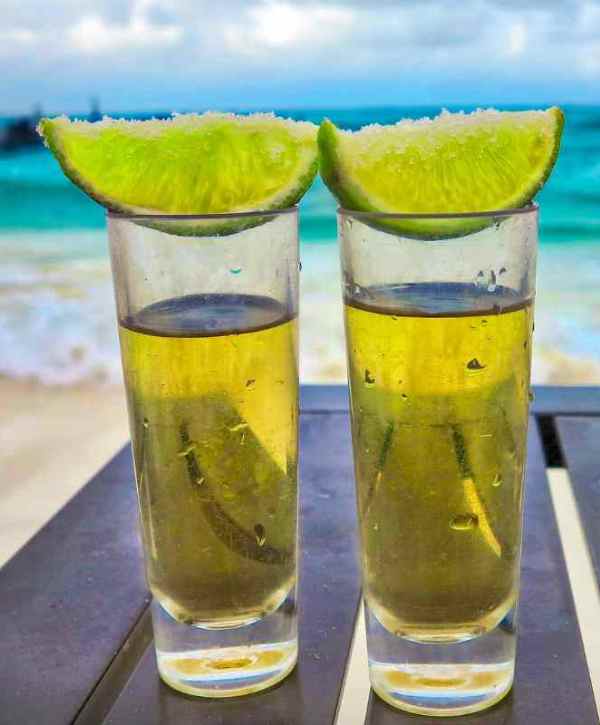
Taste of Mexico

Romance
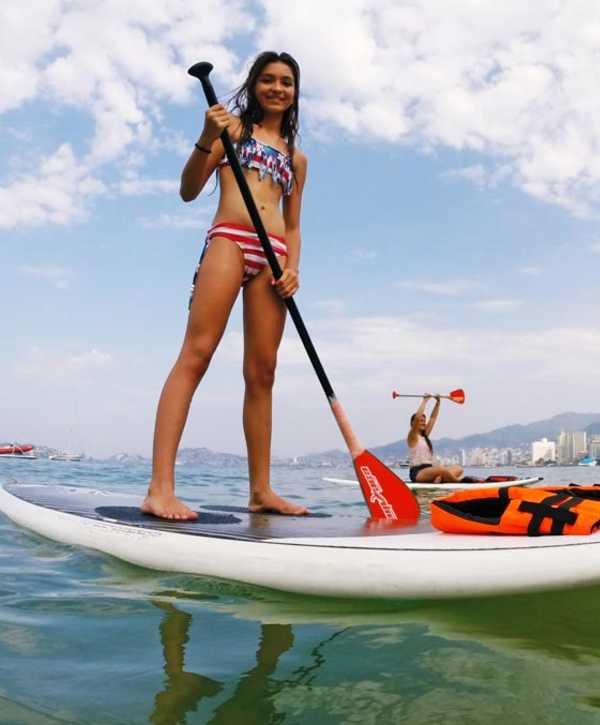
Activities

Wine Tasting
Latest from the Blog
Lorem ipsum dolor sit amet, consectetur adipisicing elit, sed do eiusmod tempor incididunt ut labore et dolore magna aliqua. Lorem ipsum dolor sit amet, consectetur adipisicing elit, sed do eiusmod tempor incididunt ut labore et dolore magna aliqua. Lorem ipsum dolor sit amet, consectetur adipisicing elit, sed do eiusmod tempor incididunt.
A Special Thanks to All Our Sí Destinations
Sí
Baja
California
Cabo San Lucas
Ensenada
La Paz
Loreto
Puerto Peñasco
Rosarito
San José del Cabo
Sí
Costa
Pacífica
Acapulco
Huatulco
Ixtapa-Zihautanejo
Nuevo Vallarta
Mazatlán
Manzanillo
Puerto Vallarta
Punta de Mita
Sí
Riviera
Maya
Akumal
Cancún
Cozumel
Isla Mujeres
Puerto Aventuras
Playa del Carmen
Tulum
